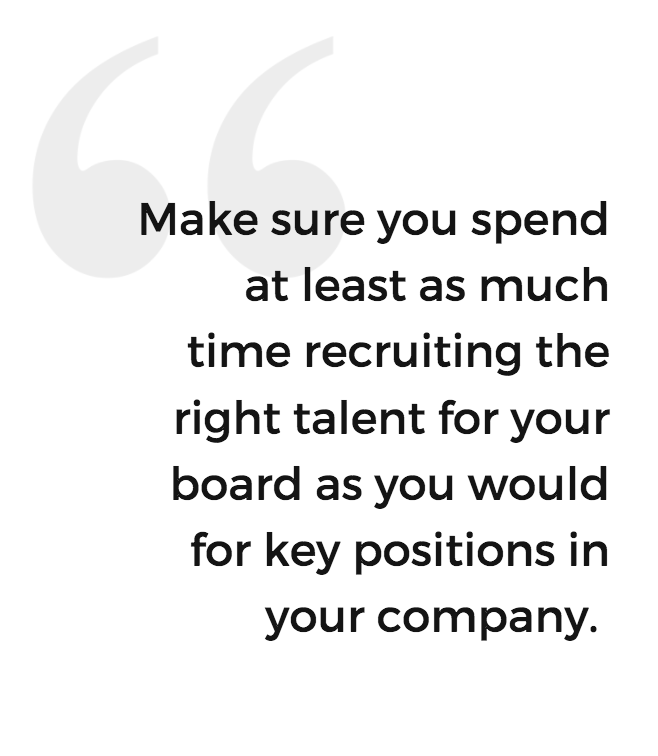 am on the board of a few organizations. I’ve also had to run board meetings for companies at various points in my life. Board meetings can be highly contentious, painful, anxiety-inducing and largely useless — or they can be an amazing space for you, the entrepreneur, to set strategic direction and deep discussion.
am on the board of a few organizations. I’ve also had to run board meetings for companies at various points in my life. Board meetings can be highly contentious, painful, anxiety-inducing and largely useless — or they can be an amazing space for you, the entrepreneur, to set strategic direction and deep discussion.
What I have found over the years is that it largely seems to come down to two factors: the people on your board, and the way you run the meeting. Let’s talk people first.
1. The People
To the extent you can influence who’s on your board (sometimes you have people on your board who are there by decree of your investors), make sure you spend at least as much time recruiting the right talent for your board as you would do with key positions for your company. You want your board to complement you — people with the experience and talent you don’t have. Great board members challenge you and your thinking, while supporting you at the same time. Don’t fall into the trap of picking board members for optics; I have rarely seen that work out.

Instead of having “famous entrepreneur X” on your board (who doesn’t actually do anything regularly), find people who are outstanding at what they do and who are willing to work for the company. Don’t get board members who are yes-men and women. You need your board to co-create the strategic direction of the company, to support you with tough decisions, and to bring their experience and network to the table.
And just so this is clear: The board works for the company. The important point here is works. Boards are not friendly gatherings once in a while over coffee or drinks.
2. The Meeting
With that out of the way, let’s talk about how you run the meeting. Way too many board meetings consist purely of status updates: The CEO briefs the board about what happened since the last meeting and what is planned for the future. You should make all of this required pre-reading. With that understanding, you can use the time with your board to discuss and plan.
The best board meetings I attend are the ones where the entrepreneur sends me a briefing package a couple of days before the meeting – not only providing the updates, but also highlighting areas that need discussion (e.g. revenue shortfalls or big client wins) – along with a list of 3–5 strategic questions that she wants to discuss with the board. That way, we make the most of the time we have together and truly move the needle for the company.
These tips and recommendations are equally as true for Board of Director meetings (where there might be more formality required by law) as well as Board of Advisor meetings.
This originally published on Medium.



